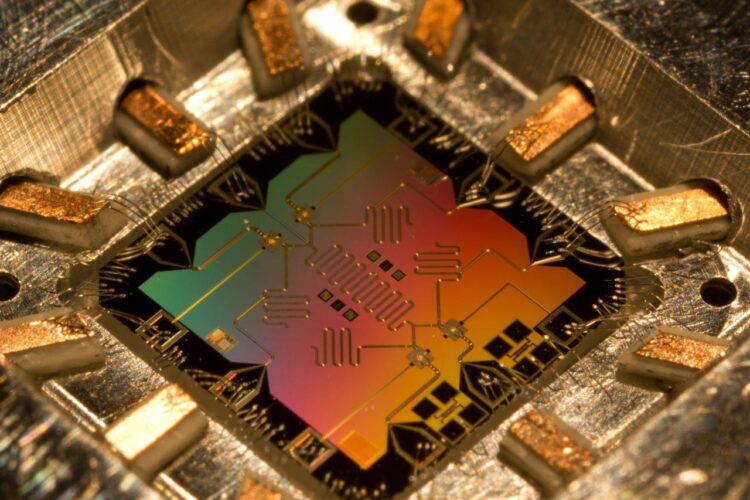In the vast and ever-accelerating world of technology, few concepts carry the same weight of transformative potential and profound mystery as quantum computing. It is not merely an incremental upgrade to our current digital infrastructure; it is a fundamental paradigm shift, a leap into a new reality of computational power. While the classical computers that power our world—from smartphones to supercomputers—are reaching the physical limits of their capabilities, quantum computing promises to unlock solutions to problems currently deemed impossible. This impending revolution will redefine entire industries, reshape our understanding of science, and present a formidable challenge to our digital security.
For business leaders, scientists, and curious minds, understanding the impact of quantum computing is no longer an academic exercise; it is a strategic necessity. This technology is poised to move from the pristine environments of research labs into the core of our economic and social fabric. This article will demystify the core principles of this groundbreaking science, explore its game-changing applications across critical sectors, confront the looming threat it poses to global cybersecurity, and map out the road ahead. We are standing at the dawn of the quantum age, and preparing for its arrival begins with understanding its immense power.
Demystifying the Quantum Realm: Beyond Bits and Bytes
To grasp the impact of quantum computing, one must first understand how it fundamentally differs from the classical computing that has defined the last century. A classical computer, at its heart, operates on a binary system of bits. Each bit is like a light switch, capable of being in one of two definite states: either 0 or 1. All the complex operations a computer performs are simply a result of manipulating millions of these switches with incredible speed.
Quantum computers, however, operate on principles that govern the universe at the subatomic level, as described by quantum mechanics. They use “qubits” instead of bits. A qubit is not limited to being just a 0 or a 1; it can exist in a combination of both states simultaneously.
A. Superposition: This is the core concept. Imagine a spinning coin. While it’s in the air, it’s neither heads nor tails—it’s a blend of both possibilities. Only when it lands (is measured) does it settle into a definite state. A qubit is like that spinning coin. This ability to hold multiple values at once allows quantum computers to process a massive number of possibilities simultaneously. Where a classical computer would have to test every path in a maze one by one, a quantum computer can explore all paths at the same time.
B. Entanglement: Described by Albert Einstein as “spooky action at a distance,” entanglement is another counter-intuitive quantum phenomenon. Two qubits can become entangled, meaning their fates are intrinsically linked, no matter how far apart they are. If you measure one entangled qubit and find it in the state of 0, you instantly know that its entangled partner, even if it’s on the other side of the galaxy, is in the state of 1. This interconnectedness allows for incredibly complex and powerful information processing, creating shortcuts to solving certain types of problems.
These two principles, superposition and entanglement, give quantum computers their exponential power. While a classical computer’s power increases linearly with each added bit, a quantum computer’s power grows exponentially with each added qubit. This is the key that will unlock doors that classical computers could never hope to open.
The Quantum Impact: Industries on the Brink of Transformation
The true significance of quantum computing lies in its practical applications. Its ability to simulate complex systems and solve massive optimization problems will catalyze breakthroughs across nearly every major industry.
A. Medicine and Healthcare: The process of discovering new drugs and developing novel medical treatments is incredibly complex, often requiring the simulation of molecular interactions. Classical computers struggle with the sheer complexity of these simulations. Quantum computers, operating on the same quantum principles as the molecules themselves, will be able to model these interactions with perfect accuracy. This could slash the time and cost of drug development, leading to rapid creation of new pharmaceuticals for diseases like Alzheimer’s, cancer, and cystic fibrosis. Furthermore, it will revolutionize personalized medicine by making it possible to sequence and analyze an individual’s entire genome quickly, leading to treatments tailored to a person’s unique genetic makeup.
B. Finance and Economics: The global financial system is a web of immense complexity, filled with variables that are difficult to model and predict. Quantum computers are perfectly suited for this challenge. They will be able to run financial models of unprecedented sophistication to more accurately price assets, assess risk, and optimize investment portfolios. For trading firms, quantum algorithms could optimize complex arbitrage strategies across global markets in near real-time, offering a significant competitive advantage. This will lead to more stable and efficient markets, but also raises questions about a new technological arms race in the financial sector.
C. Artificial Intelligence and Machine Learning: Quantum computing is set to become a powerful accelerant for artificial intelligence. Machine learning models, particularly complex ones, require the processing of enormous datasets and the optimization of millions of parameters. Quantum machine learning algorithms could perform these calculations exponentially faster, allowing for the creation of more powerful, more intelligent, and more nuanced AI systems. This could lead to breakthroughs in areas like natural language processing, computer vision, and the development of AI that can solve more abstract and creative problems.
D. Manufacturing and Materials Science: The creation of new materials has historically been a process of trial and error. Quantum computers will allow scientists to design novel materials from the atomic level up. By simulating the quantum behavior of atoms, researchers can engineer materials with specific desired properties—stronger, lighter alloys for the aerospace industry; more efficient semiconductors for electronics; or revolutionary new catalysts for creating clean energy. This will usher in a new era of materials science, leading to products and technologies we can only begin to imagine.
E. Logistics and Global Optimization: Many real-world challenges, from optimizing shipping routes for a global logistics company to designing the most efficient layout for a microchip, are fundamentally optimization problems. The “traveling salesman problem” is a classic example: finding the shortest possible route that visits a set of cities. While this sounds simple, the number of possible routes grows astronomically with each new city, making it impossible for classical computers to solve for large numbers of locations. Quantum computers can tackle these problems with ease, leading to massive efficiency gains in supply chains, transportation networks, and manufacturing processes.
The Quantum Threat: A Cybersecurity Apocalypse in Waiting

For all its incredible promise, quantum computing casts a long and ominous shadow over our digital world. The very foundation of modern cybersecurity and e-commerce relies on encryption standards like RSA, which are secure because classical computers find it practically impossible to factor the large prime numbers used to create the encryption keys.
However, a sufficiently powerful quantum computer running Shor’s algorithm, an algorithm specifically designed for quantum machines, will be able to factor these numbers with alarming ease. When that day comes, virtually all of our currently protected data—from government secrets and financial records to personal emails and private messages—will be vulnerable.
This creates the urgent threat of “harvest now, decrypt later.” Malicious actors and nation-states are believed to be currently collecting vast amounts of encrypted data, storing it with the expectation that they will be able to decrypt it once a powerful quantum computer is available. This makes the development of new security protocols a critical and time-sensitive race. The solution lies in Post-Quantum Cryptography (PQC), the development of new encryption algorithms that are resistant to attacks from both classical and quantum computers. Governments and standards bodies around the world are working urgently to develop and deploy these new standards before it’s too late.
Challenges on the Path to Quantum Supremacy
While the future is bright, quantum computing is still in its early stages. Building and operating these machines presents immense scientific and engineering challenges.
- Decoherence: Qubits are incredibly fragile. The slightest vibration, temperature fluctuation, or interaction with their environment can cause them to lose their quantum state (a process called decoherence), corrupting the calculation. This requires building computers that are almost perfectly isolated from the outside world, often kept in super-cooled, vacuum-sealed environments.
- Error Correction: The fragility of qubits also means that quantum computers are prone to errors. Developing effective quantum error correction codes is a highly complex field of research and is one of the biggest hurdles to building large-scale, fault-tolerant quantum computers.
- Scalability: While companies have successfully built machines with dozens or even hundreds of qubits, scaling up to the thousands or millions of stable, high-quality qubits needed to solve the world’s most challenging problems remains a monumental task.
Preparing for a New Reality

Quantum computing is not science fiction. It is a tangible and rapidly advancing field of technology that holds the dual potential for unprecedented progress and profound disruption. It promises to heal diseases, create unimaginable technologies, and solve some of humanity’s most pressing challenges. At the same time, it forces us to completely rethink our approach to digital security and data privacy.
The transition to the quantum era will be gradual, but its impact will be monumental. We are not on the cusp of replacing our laptops with quantum devices; rather, these powerful machines will likely be accessed via the cloud, working in concert with classical computers to solve specific, highly complex problems. For now, the imperative is to invest in research, foster a quantum-ready workforce, and urgently develop and deploy quantum-resistant cryptography. The quantum revolution is not a matter of if, but when. The future will belong to those who are prepared for it.












